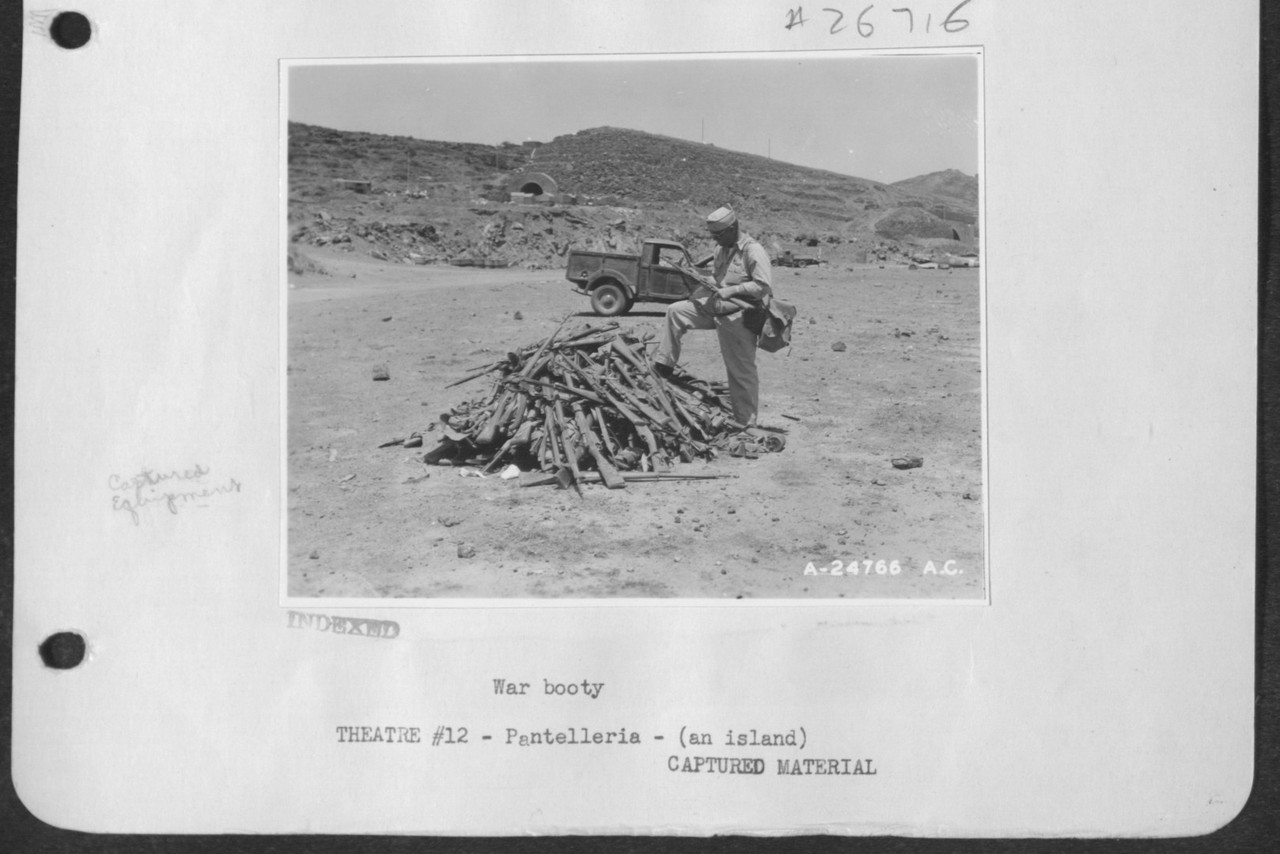Following the surrender of the Axis forces in North Africa in May 1943, the Allied commands decided to prepare plans for the invasion of Italy.
Between 9 May and 6 June 1943, the Anglo-American air force heavily bombed Pantelleria: the conquest of the island and the Pelagie archipelago was considered of paramount importance in order to launch Operation Husky. By exploiting its port and airport infrastructures (Pantelleria is located just 65km northeast of Tunisia and 110km southwest of the Sicilian coast), it would be easier to attack Sicily and further strengthen air and sea control over the Mediterranean. To achieve this strategic objective, more than 6200 tonnes of bombs rained down on Pantelleria in just under a month, dropped during Allied air raids but also from the bombardment operated by British naval vessels.
The Italian General Staff, aware of how crucial the island of Pantelleria was for the defence of Sicily, had therefore fortified and garrisoned it with a large military contingent of more than 11,000 troops, supported by 21 batteries of cannons.
In the initial stages of Operation Corkscrew, the Allies knocked out the runways of the airport. However, most of the Italian aircraft escaped the bombing unscathed because they were protected by hangars designed by Pier Luigi Nervi, Italian engineer and architect, in the 1930s. Despite the huge deployment of forces, when the British troops landed on the island on 11 June, the Italian soldiers, led by Admiral Gino Pavesi, surrendered. Resistance to the Allies was therefore almost non-existent.
At the same time, the Anglo-Americans also acted on the other islands of the Pelagie archipelago. Lampedusa, defended by some 4,400 soldiers, was intensely bombarded for the first time on 5 June, while on 7 June the British attempted an initial assault on the island, which was repulsed. On 12 June, an intense bombardment annihilated the Italian defences. Realising that it was impossible to defend themselves, Admiral Orazio Bernardini took the decision to surrender to the Allies. On 13 June, the island of Linosa and the islet of Lampione were also taken. The first step for the landing in Sicily (and Europe) was accomplished.
